I want to find the intersection point of two lines and then check if that point is equal to a predefined value (here I take it the exact value).
This is my minimum working example,
PROGRAM foo
IMPLICIT NONE
! Real kind number
INTEGER, PARAMETER :: RKN = 8
! Parameters of line formulae
REAL(RKN) :: a1, b1, c1, a2, b2, c2
! Exact values
REAL(RKN), DIMENSION(2) :: ans
! Points of first line
REAL(RKN), DIMENSION(2) :: pnt_a, pnt_b
! Slope of first line
REAL(RKN) :: m
! Intersection
REAL(RKN), DIMENSION(2) :: x
! Output format
CHARACTER(*), PARAMETER :: fmt = '(X, A, X, GO)'
pnt_a = [- 4._RKN, - 1._RKN]
pnt_b = [- 1._RKN , 0._RKN]
m = (pnt_b(2) - pnt_a(2)) / (pnt_b(1) - pnt_a(1))
a1 = m
b1 = - 1._RKN
c1 = m * pnt_a(1) - pnt_a(2)
! Second line is horizontal and has no vertical intercept
a2 = 0._RKN
b2 = 1._RKN
c2 = 0._RKN
! Cramer's rule
x = [(c1 * b2 - b1 * c2) / (a1 * b2 - b1 * a2), (a1 * c2 - c1 * a2) / (a1 * b2 - b1 * a2)]
ans = [- 1._RKN, 0._RKN]
WRITE(*, fmt) 'x(1) = ', x(1)
WRITE(*, fmt) 'ans(1) = ', ans(1)
PRINT *, x(1) == ans(1)
PRINT *, ABS(x(1) - ans(1)) < EPSILON(1._RKN)
END PROGRAM
After compilation, output is,
x(1) = -.9999999999999998
ans(1) = -1.000000000000000
F
F
Though reals are double precision, the output is not close enough to exact answer, even using EPSILON()intrinsic function. If RKN is set to 16, it produces,
x(1) = -1.00000000000000000000000000000000
ans(1) = -1.00000000000000000000000000000000
F
F
How can I handle this type of problems?
